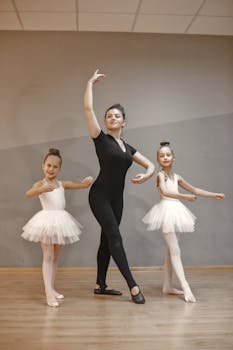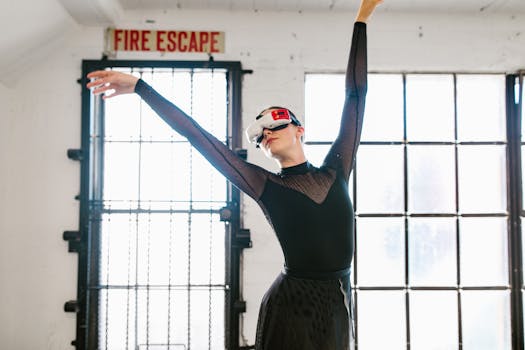Digital tools have transformed various aspects of our lives, including the artistic world. Among the art forms, dance has particularly experienced a significant shift due to these advancements. As new technologies emerge, they redefine how we create, teach, and perform dance.
The integration of digital tools has opened new avenues for choreographers and dancers alike. From video editing software to online platforms for learning, the impact is both profound and far-reaching. This modern approach to dance enhances creativity, enables broader dissemination of art, and fosters collaboration across geographical boundaries.
Moreover, digital tools provide opportunities for dancers to connect with audiences in innovative ways. Social media, for example, allows dancers to share their craft widely, breaking traditional barriers. The exploration of these tools reveals the exciting possibilities that shape the future of dance.
The Evolution of Dance Technology
Over the years, dance technology has evolved, radically changing the artistic landscape. Initially, the development of recording devices marked the beginning of this transformation. Dancers and choreographers could document their work, preserving it for future generations.
As technology progressed, we witnessed the emergence of video editing tools. These innovations allowed artists to enhance their projects, creating visually stunning performances. This evolution significantly expanded how dance was perceived and consumed.
Additionally, technology has given rise to motion capture systems, which analyze dancers’ movements. These systems contribute to various fields, including animation, gaming, and performance art. The influence of motion capture is quite profound in contemporary dance.
Today, virtual reality (VR) and augmented reality (AR) are becoming game-changers in the dance world. These technologies create immersive experiences for both dancers and audiences. Such innovations elevate the engagement level of dance performances.
The continuous evolution of technology signifies a dynamic future for the dance industry. It promises more creative solutions and artistic expression, shaping the direction of dance as we know it.
Digital platforms for Learning Dance
The growth of online dance classes represents a significant shift in how people learn this art form. Aspiring dancers can now access quality instruction from professionals around the globe without geographical limitations. This democratization of dance education is revolutionary.
Through platforms like YouTube and social media, learners are exposed to various styles, techniques, and philosophies. They can follow along with tutorials, enhancing their skills at their own pace. This accessibility allows for personalized learning experiences.
Moreover, digital platforms have enabled renowned dance educators to reach wider audiences. A dance instructor in New York can now teach students in remote corners of the country through live-streamed classes. This connection fosters community and sharing amongst dancers.
Additionally, platforms focusing on user interaction, such as Zoom, facilitate real-time feedback during lessons. This instant communication helps learners refine their techniques and foster improvement. It enhances the learning experience significantly.
Ultimately, the rise of digital learning platforms plays a crucial role in democratizing dance education, making it available to diverse audiences everywhere. This transformative approach cultivates passion and talent among aspiring dancers.
Choreography in the Digital Age
The choreography process has also been transformed by digital tools. Choreographers now employ software to create, visualize, and manipulate dance sequences. These tools allow for a more experimental approach to composition.
Digital storyboards enable choreographers to plan their performances meticulously. This visualization process enhances creativity, allowing for adjustments before stepping into the studio. It streamlines the choreography process and fosters collaboration among dancers.
Furthermore, choreographers utilize apps that assist in setting music to movement, enhancing the synchronicity between dance and rhythm. This integration enriches the choreographic process, adding layers to artistic expression.
Technology also facilitates the exploration of interactive choreography, blurring the lines between dancer and audience. Innovations like audience-triggered visuals during performances create engaging experiences. This adds dynamic elements to traditional dance.
Overall, digital tools empower choreographers to experiment and push boundaries, crafting unique performances that capture the imagination. The creative possibilities in choreography continue to expand in the digital age.
Social Media’s Influence on Dance Culture
Social media has significantly altered how dance is shared and perceived. Platforms like Instagram and TikTok showcase dance in exciting, engaging formats. This phenomenon has led to a surge in global dance challenges and trends.
Moreover, social media enables dancers to build personal brands and connect with their audiences. This is a departure from traditional methods of gaining recognition through formal performances alone. Dancers can showcase their talent daily to followers worldwide.
Furthermore, social media serves as a tool for collaboration, where dancers can connect across the globe. They share ideas, techniques, and experiences, creating a vibrant, interactive dance community. This connectivity fosters artistic growth and development.
Additionally, social media provides a platform for dancers to express their unique voices and styles. They can experiment with short-form content, reaching diverse audiences in a fun and entertaining manner. This variety enriches the dance culture.
In conclusion, social media serves as a powerful tool in shaping and representing contemporary dance culture. It broadens the horizon for dancers to express, share, and innovate within their art form.
Interactive Dance Experiences
Interactive dance experiences have emerged as a compelling method to engage audiences. Tall screens and projection technology enable audiences to participate in real-time during performances. This trend creates a unique blend of entertainment and interaction.
For instance, performances may involve audience members who can control visual elements through their movements. This unique aspect unites performers and spectators, fostering a communal dance experience that transcends boundaries.
Moreover, advancements in haptic technology allow audiences to feel the music and dance through vibrations. This innovative approach enhances the sensory experience of dance, captivating the audience in diverse ways.
Further, apps that integrate with live performances permit audiences to choose their visual journey. This interactivity adds an additional layer of engagement, fostering a sense of ownership over the experience.
Overall, interactive dance experiences represent the future of performance art, bridging the gap between artists and audiences in meaningful ways. They emphasize that dance is not only about expression but also connection.
The Challenges of Digital Dance
Despite the many benefits of digital tools in dance, challenges exist that warrant consideration. For instance, the over-reliance on technology can dilute the essence of live performances. This balance between technology and traditional elements is crucial.
Additionally, not all dancers have equal access to digital tools and resources. This can create disparities in learning opportunities, especially for marginalized communities. Addressing these inequalities is vital for inclusivity in dance.
Moreover, the pressure to produce content for social media can lead to burnout. Dancers may feel compelled to maintain a constant online presence, detracting from their artistic growth. This issue calls for a mindful approach to digital engagement.
Furthermore, the proliferation of dance videos can sometimes lead to plagiarism or misrepresentation of styles. Protecting originality and respecting cultural roots in dance is essential in the digital environment.
In summary, while digital tools offer numerous advantages in dance, they also present challenges that require attention. A balanced approach is vital to ensure a healthy relationship between dance and technology.
The Future of Dance in a Digital World
The future of dance is undoubtedly intertwined with technology. As innovations continue to emerge, they will create exciting opportunities for exploration and creativity. The synergy between dance and technology will shape artistic direction moving forward.
Moreover, the enhanced ability to document and share dance performances will expand audiences’ reach and appreciation. Through digital platforms, dancers from diverse backgrounds can showcase their stories and perspectives. This diversity enriches the dance community.
Additionally, the potential for hybrid performances combining live elements with digital enhancements will offer new experiences. These groundbreaking approaches can captivate audiences in ways previously unimagined. The possibilities are limitless.
Furthermore, education in dance will continue to evolve, integrating digital tools to create engaging and interactive learning experiences. This fosters a new generation of dancers who are versatile and adaptable in their approach.
Ultimately, the intersection of dance and digital tools promises to pave the way for dynamic growth and innovation in the dance industry. It sets the stage for future evolution and expression.
Conclusion
The impact of digital tools on dance is profound and multifaceted. From shaping choreography to revolutionizing dance education, these tools enhance the art form dramatically. The growing integration of technology fosters creativity and connection, enriching dance culture globally.
However, it is essential to remain mindful of the challenges that accompany these advancements. Balancing technology with the core principles of dance ensures its integrity and inclusivity. Fostering diversity and accessibility in the digital dance landscape is critical.
As we move forward, the collaboration between dance and technology will lead to endless possibilities. Embracing these changes while maintaining a foundation in artistic tradition will create a vibrant future for dance. The next era in dance is just beginning.


